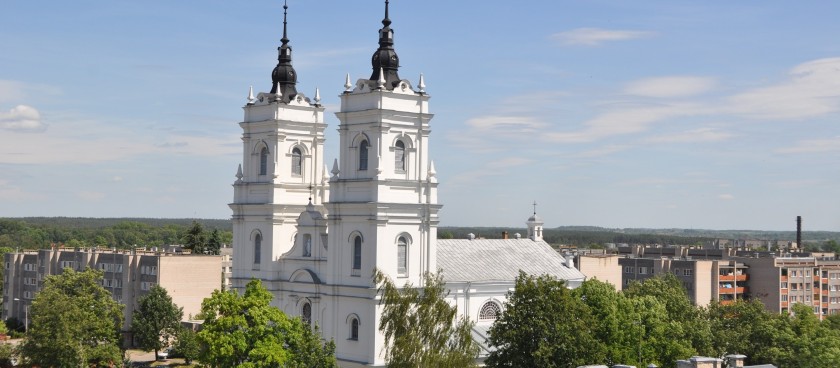Daugavpils Roman Catholic Church of the Blessed Virgin Mary
, Show all 105 places in LATVIA » LATVIA105- #LV57
- 11a A. Pumpura Street, Daugavpils
- +37165439187
- DievmatesDraudze@gmail.com
- http://www.ddmd.lv
- 55.8708482, 26.5429415 Copy to clipboard Copy
-
#Churches
Daugavpils Roman Catholic Church of the Immaculate Conception of the Blessed Virgin Mary was founded as the city of St. Branch of Peter's parish. Taking into account the development of the city, it was decided not to expand the existing church in the city center, but to build a new church in the New Building district. The building permit was received in 1902, but an independent congregation was established in 1912.
The church building was designed by the architect Vilhelms Neimanis (after his design, the Lutheran Church (1891-1893) and the Grīva Catholic Church (1881-1889) were built in the city. The construction of the church in the New Building District began in mid-April 1903, and was completed and consecrated in 1905.
The church is a plastered brick building, a thin rectangle closed by three semicircular building volumes - an apse and two sacristy. The facade of the two-tower church with slender towers is designed in neo-baroque forms, using profiled eaves, pilasters and varied window framing motifs. The plastic façade is accentuated in the entrance façade, but a niche for the statue of the Mother of God is built in the profile of the profiled silhouette.
This Roman Catholic church is an eclectic monument. The common style includes the interior and equipment of the church. The space of the three-part basilica is divided by an arcade, but in the entrance part, a vestibule is separated by glazed arches, above which an organ lantern is built.
The middle area is covered by cylindrical vaults, but the side areas are covered by cross vaults. The Chapel of Our Lady of Lourdes has been established in the church. The neo-baroque central altar, as well as the neo-Gothic side altars, which are made of wood, were made in 1905-1906. In neo-Gothic forms, the steps of churchmen and steps are solved, as well as the pulpit, which is decorated with openwork wrought iron. Luxurious, finely designed wrought iron railings are also designed for the organ lamp.
The central altar contains a copy of Esteban Murillio's painting The Immaculate Conception, made by Alexander Sergei Boravsky in St. Petersburg in 1906.
The side altars feature paintings by anonymous professional authors from the first half of the 20th century, depicting Saints Stanislavs and Kazimirs, while the plot of the Heart of Jesus was painted by J. Kosinski. Several plaster statues have also been used for the interior decoration, but the terracotta reliefs with scenes of the "Cross Road" in 1905, brought into woodcut frames, were brought from Poznań.
Two crucifixes and two neo-baroque feretrons testify to the skills of 19th and 20th century professional wood sculptors and woodcarvers. The largest organ made by Polish organ builders in Latvia is located in the church - the organ dating from 1909 (28 registers, two manually) was made by the company of Adolf Homan (Warsaw, Vilnius); this romantic sounding instrument was overhauled in 1984. Specialists recorded this instrument in the category of Latvia's historical organ, but in 1986 the record company Melodija released a disc with its sound. The organ is specially adapted to the church's original acoustics with a bright echo effect.
In the second half of the 20th century (around 1978) the interior of the church was decorated with ornaments and figural wall decorations, the author of which is mentioned by the local master Albert Tirranen. Episodes of the life of the Mother of God are depicted on the walls of the middle part in the semicircular frames, the triumphal arch is covered with paintings with scenes of the life of Christ.
Our Catholic Church is an important monument of sacral architecture of historicism, which has retained its original form, vividly characterizing the regional peculiarity in the choice of prototypes (Baroque two-tower basilica), connection with the city's 18th century church architecture, and the development of Wilhelm Neiman's handwriting.



